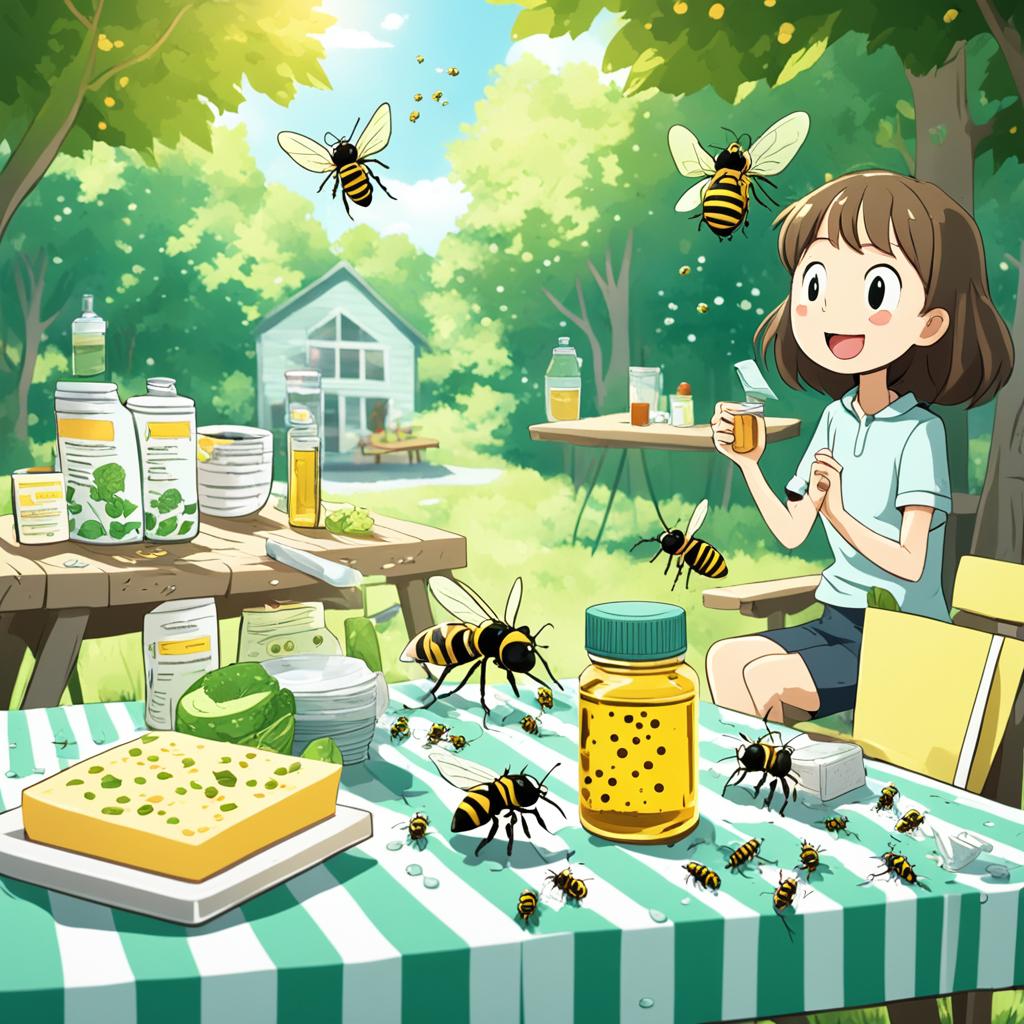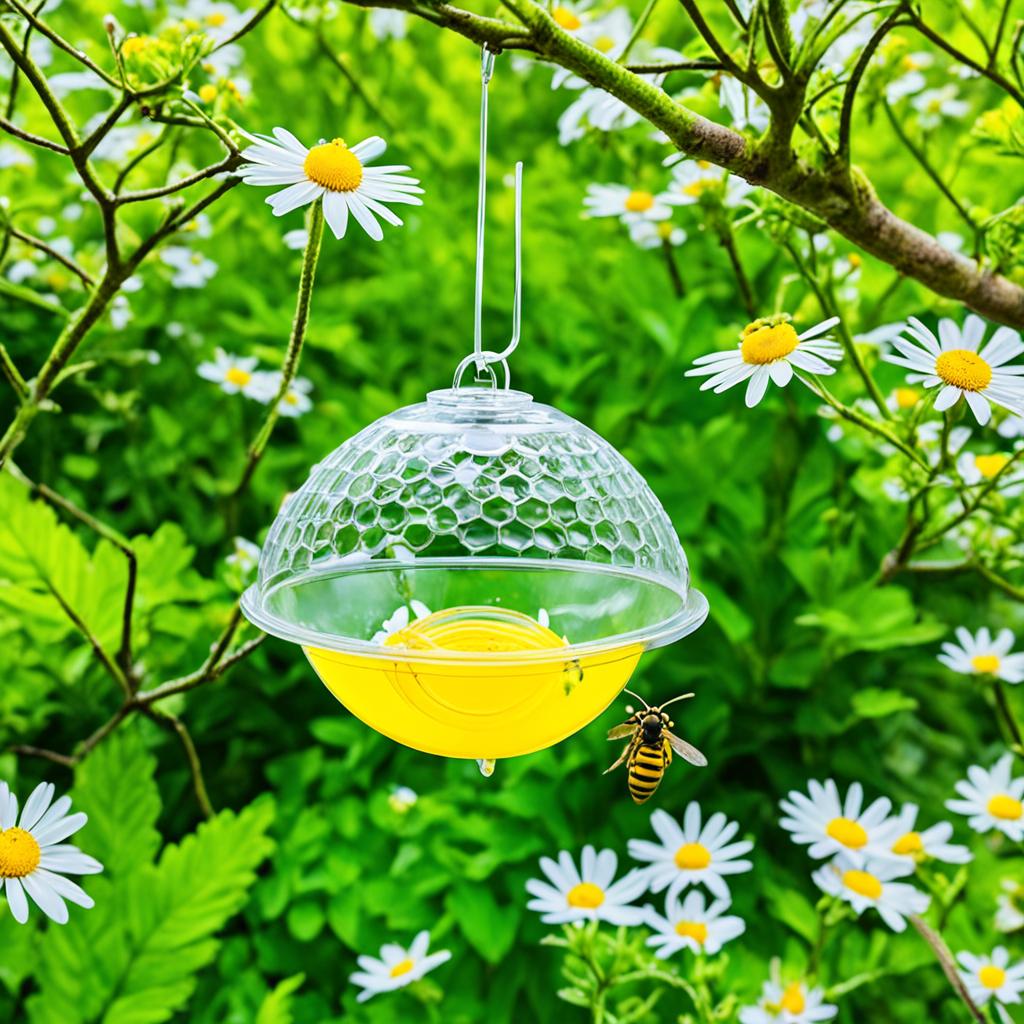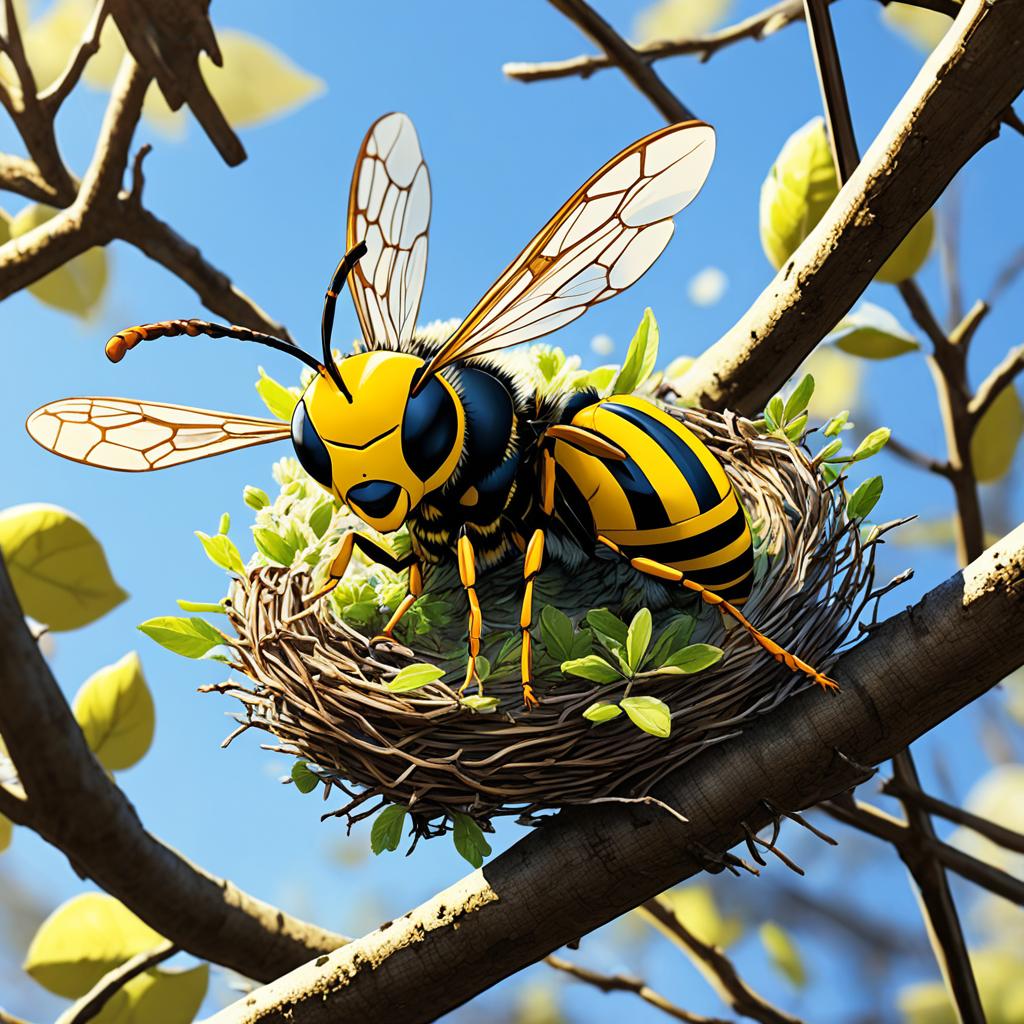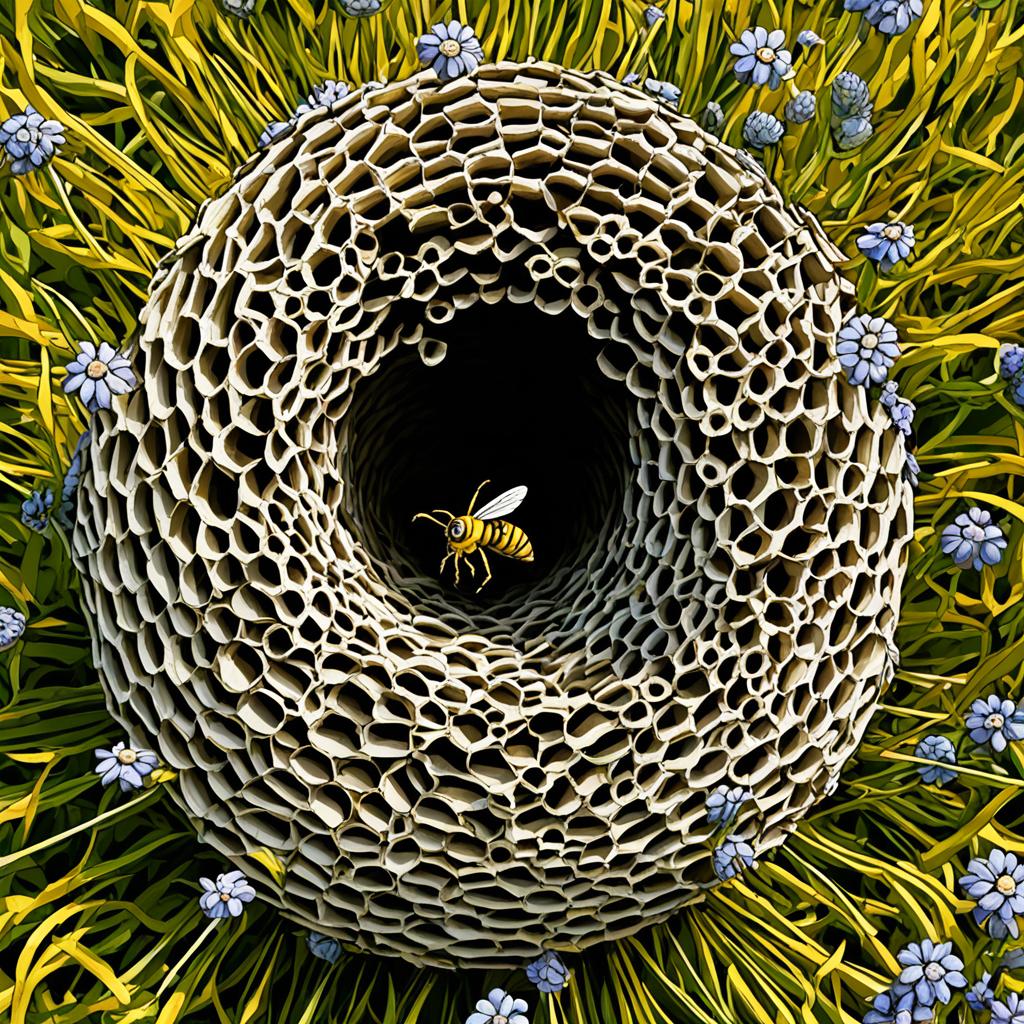Have you ever wondered how far wasps travel from their nests? It’s a question that has likely crossed your mind, especially if you’ve encountered these buzzing insects in your yard. Understanding the traveling distance of wasps can help you better prepare and navigate your surroundings, keeping you safe from potential stings and infestations.
Contrary to common belief, wasps, particularly flying species like wasps and hornets, typically do not stray far from their nests. This means that if you spot a wasp in your yard, there is likely a nest nearby. But just how close are they?
Identifying and Locating Wasp Nests
When attempting to identify and locate a wasp nest, it is crucial to accurately distinguish the insect from bees. Wasps are often mistaken for bees, so it is essential to get a closer look without posing a threat.
Monitoring the movement of wasps can provide valuable insights into the nest’s location. Observing their flight patterns and behavior can give you an idea of where the nest might be located. Wasps typically fly in a direct path from food sources back to their nest, so tracking their movements can be helpful.
If you lose sight of the wasps or want to be more proactive, you can lay out bait to attract them. Sweet food or drinks, such as fruit juice or sugar water, can lure the wasps and help you track their path back to the nest. This method can be especially useful if the nest is hidden or difficult to access.
Paper wasps, one common type of wasp, usually build their nests in corners or between exposed ceiling beams. These nests are often open, with hexagonal cells visible from the outside. They have a papery appearance and are typically gray or brown in color.
To identify and locate wasp nests, it is important to pay attention to the behavior and habits of these insects. By understanding their patterns and studying their nests, you can effectively deal with potential wasp problems and ensure the safety of yourself and your surroundings.
Stay tuned for the next section where we will explore effective methods for preventing wasp encounters.
Preventing Wasp Encounters

Taking precautions to prevent wasp encounters is crucial to avoid any potential risks. Here are some effective measures you can take:
- Seal entry points: Use caulk or weatherstripping to seal any cracks or gaps in windows, doors, vents, and other potential entry points.
- Remove food sources: Keep your outdoor area clean and free of food debris that may attract wasps. Make sure to cover trash cans tightly.
- Avoid swatting: While it may be tempting to swat at a wasp, this can provoke them and increase the risk of stings.
- Mindful clothing choices: When spending time outdoors, opt for light-colored clothing as wasps are attracted to darker colors. Avoid wearing loose-fitting clothes that can trap wasps.
- Avoid strong scents: Strong perfumes, colognes, and scented lotions can attract wasps. Opt for unscented products when possible.
- Use fake nests or repellent herbs: Wasps are territorial and will avoid areas that appear already inhabited. Hang up fake wasp nests or plant herbs like mint, basil, and wormwood, which are known to repel wasps.
By implementing these precautions, you can significantly reduce the likelihood of wasp encounters and create a safer environment for yourself and your family.
Wasp Traps as a Control Method

Wasp traps can be an effective tool for managing and reducing the population of wasps in specific areas. Whether you opt for homemade traps or commercial ones, these traps serve as a control method to mitigate the presence of wasps.
To create a homemade water trap, you can repurpose a plastic pop bottle. Cut off the top third of the bottle and invert it into the bottom section. Fill the bottom with a mixture of water and a sweet substance like fruit juice or soda to attract the wasps. The wasps will fly into the trap and drown, providing an environmentally friendly solution.
If you prefer a ready-made solution, there are several nontoxic commercial wasp traps available for purchase. These traps are designed to attract and capture wasps without the use of harmful chemicals. Simply follow the manufacturer’s instructions for proper placement and maintenance.
For optimal results, it is recommended to place the traps in early spring when only a few wasps are present. By catching the early scouting individuals, you can prevent the reproduction and expansion of the colony. Remember to empty the traps daily to prevent trapped wasps from escaping and ensure the traps are effective throughout the season.
| Pros | Cons |
|---|---|
| Effective in reducing wasp populations | Requires regular maintenance and emptying |
| Environmentally friendly | May not completely eliminate all wasps |
| Can be homemade or commercially purchased | May attract beneficial insects |
Summary:
Wasp traps provide a practical and eco-friendly method for controlling wasp populations. Whether using homemade or commercial traps, they can significantly reduce the number of wasps in a specific area. By acting early in the season and being diligent with trap maintenance, you can effectively manage and minimize the presence of wasps.
Understanding the Life Cycle of Wasps

Wasps have a complex life cycle that consists of distinct stages and behaviors. By understanding their life cycle, you can gain insights into their behaviors and population dynamics. Here is a breakdown of the different phases in the life cycle of wasps:
- Queen Emergence: In the spring, queens emerge from hibernation. These queens are fertilized females from the previous year. Their primary task is to establish new nests for the upcoming season.
- Nest Expansion: Once a queen emerges, she starts building a new nest. Initially, the nest is small, but as the number of workers increases, the nest expands in size. Workers perform various tasks such as nest-building and foraging for food.
- Drones and New Queens: During late summer and autumn, the nest produces drones (males) and new queens. Drones mate with the new queens, and the fertilized queens will hibernate during the winter.
- Winter Survival: During winter, the nest usually dies off, while the new queens find sheltered locations to hibernate. The survival rate of nests over winter is relatively low, with only some nests able to survive and grow rapidly in the following spring.
Understanding the life cycle of wasps provides valuable insights into their behaviors and can aid in implementing effective pest control strategies. By targeting key stages in their life cycle, you can significantly reduce the population of wasps and minimize their impact on your surroundings.
Having knowledge of a wasp’s life cycle can be valuable in controlling and managing their presence. By taking appropriate actions at different life stages, you can effectively deal with wasp infestations. The next section will focus on overwintering and nest survival, providing further insights into the life of wasps.
Overwintering and Nest Survival
After mating, the wasp queens search for a dark and dry place to hibernate during the winter. While most wasp nests die off in late autumn, a small percentage manages to survive the harsh winter conditions. These surviving nests have the potential to grow significantly in size by the second autumn, with some reaching enormous dimensions.
One notable example is the largest German wasp nest ever discovered, measuring about four meters in height and containing millions of cells. This extraordinary size highlights the resilience and adaptability of certain wasp colonies.
Studying the overwintering behavior and nest survival patterns of wasps provides valuable insights into their population dynamics. By understanding how these insects navigate the challenges of winter and the factors that contribute to nest survival, researchers can gain a deeper understanding of the overall wasp population and its impact on ecosystems.
FAQ
Q: How far do wasps travel from the nest?
A: Wasps, particularly flying species like wasps and hornets, typically do not stray far from their nests. If you spot a wasp in your yard, there is likely a nest nearby.
Q: How can I identify and locate wasp nests?
A: When attempting to locate a wasp nest, it is important to first identify the insect accurately. Wasps can often be mistaken for bees, so it is essential to get a closer look without posing a threat. Monitoring the movement of wasps can give you an idea of their nest’s location. If you lose sight of the wasps, laying out bait can help you track their path back to the nest. Paper wasps, one common type of wasp, usually build their nests in corners or between exposed ceiling beams.
Q: What can I do to prevent wasp encounters?
A: Taking precautions to prevent wasp encounters is crucial to avoid any potential risks. Sealing entry points, such as vents and cracks, can help keep wasps out of your home. Removing food sources and avoiding swatting at wasps can also discourage their presence. Additionally, being mindful of what you wear and avoiding strong scents can help minimize attraction. Using fake nests or planting certain herbs known to repel wasps can further deter them.
Q: Are wasp traps effective in controlling wasp populations?
A: Wasp traps can be useful in reducing the population of wasps in specific areas. Homemade water traps, made from plastic pop bottles, can be effective in catching and drowning wasps. There are also nontoxic commercial traps available for purchase. Placing traps in the early spring when only a few wasps are present can yield the best results. It is essential to empty the traps daily to prevent wasps from escaping.
Q: What is the life cycle of wasps?
A: Wasps have a complex life cycle, with queens emerging from hibernation in the spring to build new nests. Nests expand as the number of workers increases, and the workers perform various tasks such as nest-building and foraging for food. In late summer and autumn, the nest produces drones (males) and new queens, which can reproduce. During winter, the new queens hibernate, while the nest usually dies. Nest survival over winter is relatively low, with only some nests able to survive and grow rapidly in the following spring.
Q: How do wasps overwinter and survive?
A: After mating, queens find a dark and dry place to hibernate during the winter. Most wasp nests die off in late autumn, with only a small percentage able to survive through the winter. Overwintering nests that do survive can grow significantly in size by the second autumn, with some nests reaching enormous dimensions. The largest German wasp nest ever found was about four meters high and contained millions of cells. Understanding the overwintering and survival patterns of wasp nests can provide insights into their population dynamics.
